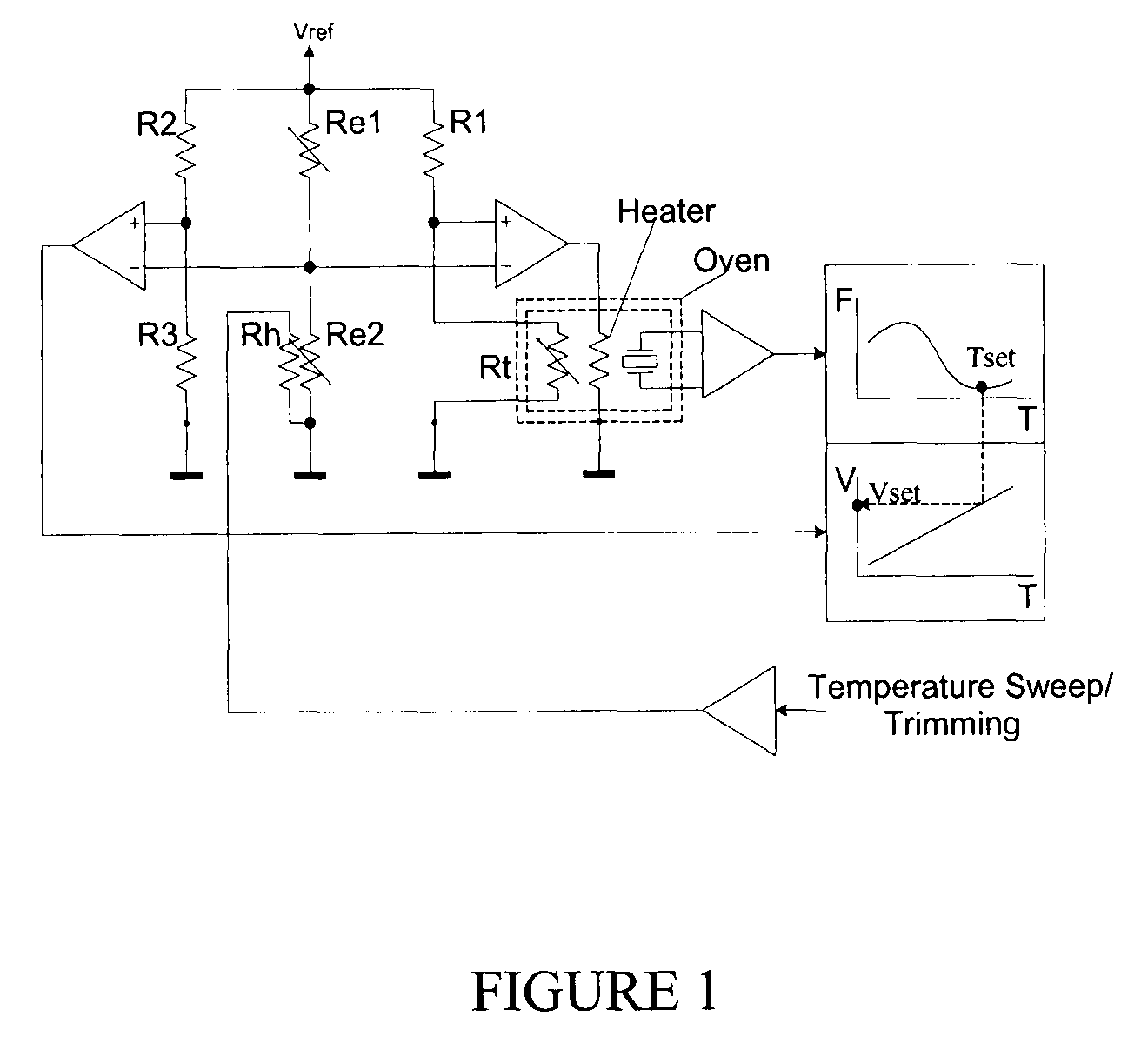Thermal pre-scanning of electric circuits using thermally-trimmable resistors
a technology of thermally-trimmable resistors and electric circuits, which is applied in the direction of resistors, non-adjustable resistors, analog circuit testing, etc., can solve the problems of limited precision, mechanical instability, and limited laser trimming range, and achieves difficult after-packaging. the effect of reducing the number of splicing and splicing
- Summary
- Abstract
- Description
- Claims
- Application Information
AI Technical Summary
Benefits of technology
Problems solved by technology
Method used
Image
Examples
Embodiment Construction
[0016]The specific case of thermal trimming provides an advantage over other trimming techniques having limited reversibility. The thermally-trimmable resistor may be electrically heated to temperatures significantly higher than room temperature or operating temperatures, without initiating significant thermal trimming. In such cases, if it has a significant non-zero temperature coefficient of resistance (TCR), then significant resistance changes may be available without committing to a trim. These reversible resistance changes may offer exploratory thermal pre-scanning of significant portions of the thermal trim range.
[0017]Thermally-trimmable resistors can offer this capability, exploratory thermal pre-scanning, to determine the desired trim-position, without committing the trim and irreversibly losing trim range. By exploratory pre-scanning, the approximate desired trim position can be ascertained, and then the trimming algorithm can take account of this position during the trim....
PUM
 Login to View More
Login to View More Abstract
Description
Claims
Application Information
 Login to View More
Login to View More - R&D
- Intellectual Property
- Life Sciences
- Materials
- Tech Scout
- Unparalleled Data Quality
- Higher Quality Content
- 60% Fewer Hallucinations
Browse by: Latest US Patents, China's latest patents, Technical Efficacy Thesaurus, Application Domain, Technology Topic, Popular Technical Reports.
© 2025 PatSnap. All rights reserved.Legal|Privacy policy|Modern Slavery Act Transparency Statement|Sitemap|About US| Contact US: help@patsnap.com



